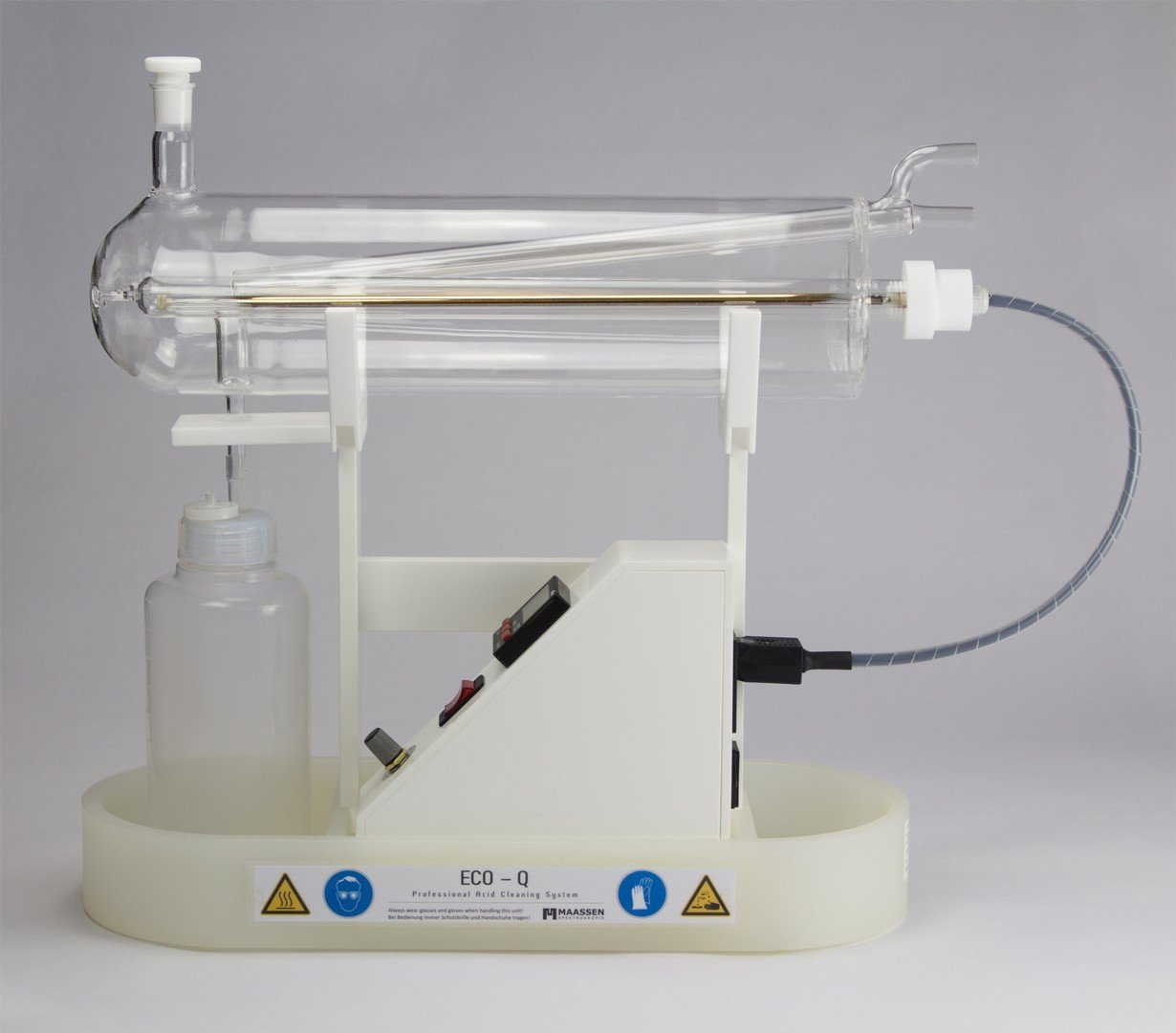Ultrapure Acids

To reach the best detection limits for trace analysis, you need to have the best quality of acids and distilled water to avoid contamination and introducing traces of other elements which leads to wrong results. But the ultra clean quality of acids is very expensive and that’s why you should think about having your own cleaning station, Maassen’s ECO Q Subboiling unit:
How it works
The liquid inside the quartz container gets evaporated below the boiling point. The heating source is above the liquids surface, so only the pure acid steam condensates at the cooling finger inside.
The ECO Q double uses two IR heating sources which is especially made for H2SO4 and other acids which need a higher temperature to evaporate.
There are no metal parts inside the acid cleaning system, so there is no contamination possible.
Setup
IR radiators heat up the liquid inside the quartz container. The maximum capacity is 1000 ml, filled through the port on top. Adjust the power with a rotary knob to avoid boiling, slow steam production improves the cleaning quality. About 15 – 20% volume should be left in the quartz container to avoid that unwanted pollution condense into the PFA bottle.
Connect a water chiller at the cooling finger, so clean acid can drop into the PFA bottle in front of the system. One PTFE filter is installed for aereation to avoid over pressure. The narrow socket with integrated catching bowl does not need much space in a fume hood. The seperate electronic box contains the power switch, power regulator and a timer. It can be taken out of the socket for easier handling.

This index shows the achieved cleaning grades, depending on the duration of the cleaning process. You can improve the quality by cleaning the acid again, therefore these data is just a reference value.